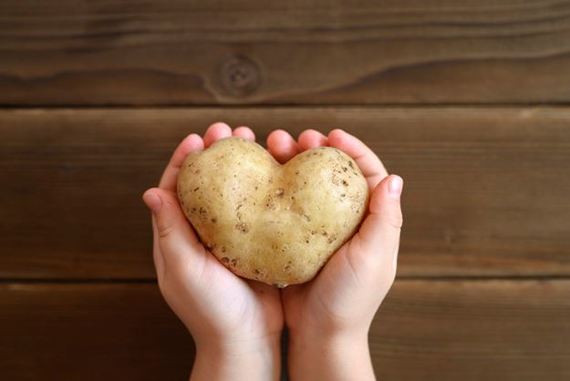There are so many books and guidelines out there on what to feed our babies. However, there has always seemed to be a gap when it comes to information on what to feed our children between the ages of 1 and 4 years old. This becomes more of a pressing issue coming into winter. As parents, we want to set our kids up in the best possible way for the cold weather and the flu season.
Luckily Healthy Ireland has recently published clear and concise guidelines on what our little ones should eat. These guidelines hold no surprises, but it is great to finally have something to refer to when making meals, so we can keep our children healthy and strong at a time when their little immune system needs it the most. Here are the new recommendations from the Department of Health, summed up:
POTATOES, PASTA, RICE, CEREAL & BREAD
According to the Department of Health, this category should make up the largest portion of your child's diet:
- Children between the ages of 1 and 2 should have 3-4 servings per day.
- Children between the ages of 3 and 4 should have 4-6 servings per day.
A serving consists of a half cup when it comes to cereal, porridge, pasta, rice etc. A serving of bread is ½ - 1 slice. This should give you a good idea of how to roughly measure your child’s servings. Of course, you can adjust these servings moderately to suit your child. Smaller and younger children should eat less. Taller, older or more active children will eat more.
The Department of Health also recommends that younger children should be given added iron. Check the label on cereal packaging and choose options that contain at least 12mg of iron per 100g.
FRUIT, VEG & SALAD
Offer your child fruit chopped into small pieces, fresh vegetables or salad at every meal or as a snack. Colours are important here. Try to include green, yellow, orange, red and purple veg or fruit in your child's diet. This will ensure they will get a variety of vitamins minerals and fibre.
- Children between the ages of 1 and 2 should have 2-3 servings per day.
- Children between the ages of 3 and 4 should have 4-5 servings per day.
A serving size that fits into half the palm of your hand is recommended in this category.
Vitamin C will help your child absorb iron which is an essential nutrient for young children. Good sources of vitamin C are berries, oranges, kiwis and red peppers.
Top Tip: Chop some fresh fruit into cereal to ensure your little one is getting everything they need.

MILK YOGURT AND CHEESE
The Department of Health recommends that children between the ages of 1 and 2 should be given breast milk or full-fat milk. Low-fat milk can be given to children between the ages of 3-4 however skimmed milk is not recommended for children under the age of five.
- Children between the ages of 1 and 4 should have 3 servings of these a day.
1 pot of plain yoghurt or 2 small pots of natural fromage frais is considered a serving. A suitable serving of cheese is the size of two adult thumbs.
Dairy alternatives
Choose soya milk as an alternative to dairy. This should be fortified with calcium and unsweetened. Other dairy alternatives like almond milk, rice milk or coconut milk are not suitable for kids of this age.
MEAT, POULTRY, FISH, EGGS, BEANS & NUTS
According to The Department of Health, there should be a serving from this food category included in two of your child’s main meals every day.
- Children between the ages of 1 and 2 should have 2 servings per day.
- Children between the ages of 3 and 4 should have 3-4 servings per day.
A serving in this category is between 30g and 40g of cooked meat, fish or other proteins like beans chickpeas and lentils. This will fit into 1/3 of an adult palm. A single egg or a heaped teaspoon of nut butter is also considered a serving.
Remember:
- Red meat such as lamb, pork and beef contain iron and should be part of your child's diet three times a week.
- Omega three and vitamin D are also very important these can be found in oily fish such as salmon, sardines, trout, herring and mackerel
- Only small amounts of bacon, ham, burgers or chicken nuggets should be eaten once a week only.

FATS, SPREADS & OILS
For children between the ages of 1 and 4, The Department of Health recommends using a single teaspoon of spread on bread and ½ a teaspoon of oil when we cook. Instead of frying food, we should try to grill, oven-bake, steam, boil or stir-fry. We should also choose olive, rapeseed, sunflower, corn or canola oil when cooking.
FAT SUGAR AND SALT
The dreaded treat category, including sweets, chocolate, biscuits, cakes, fizzy drinks and crisp. Needless to day, these should not be part of your child's everyday diet. The Department recommends that these treats only be consumed once a week and in tiny amounts.
Though this may seem like a tough task, we must make efforts to ensure our children develop healthy eating habits for their future. A great way to do this is by speaking positively and encouragingly about the foods mentioned above that will keep your child strong and healthy and that are essential to a balanced diet. Children will also benefit by seeing you and the other adults in your households, happily eating these healthy foods. For more great tips and advice, watch Ursula O'Dwyer's video about introducing the kids pyramid here.
These guidelines are brief, but you can download the Healthy Ireland PDF here.





